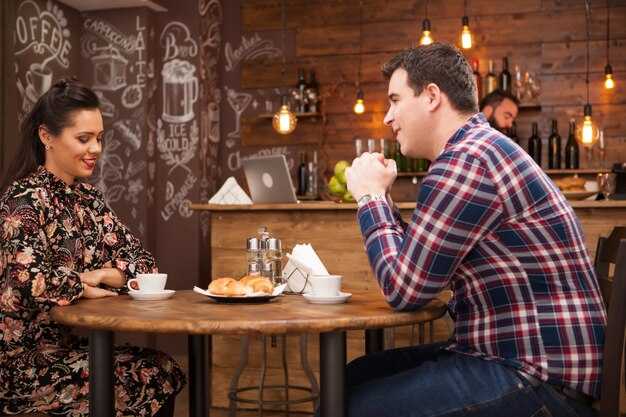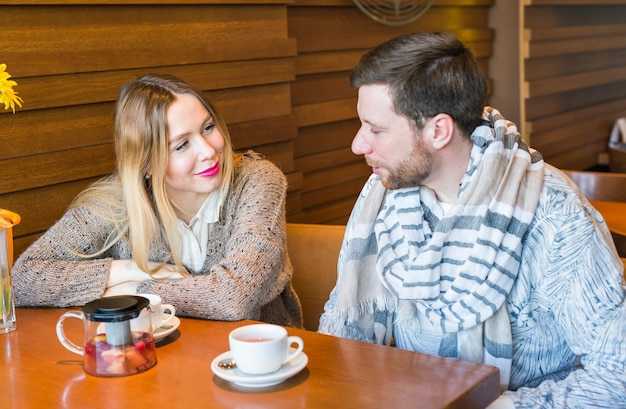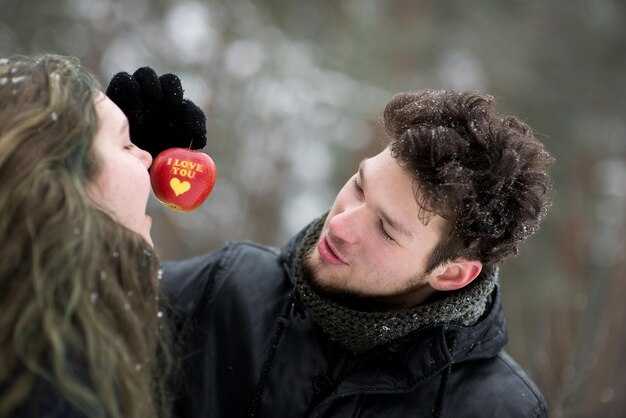Start with a neighborhood crawl: spend 90 minutes outside following a 1.5–3 mile path that hits three concrete stops – a specialty coffee shop (15–20 minutes), a curated thrift store (20–30 minutes) and a small gallery (30–40 minutes). Each stop offers a distinct feeling: caffeine + conversation, treasure-hunting for little finds, and a quiet stretch to discuss a painting. Aim for late afternoon to avoid crowds; repeat the route again on a different weekday to compare energy and see what works good for both.
Choose one option that is physically active each week and one that is low-effort: examples about cost and logistics – 30-minute bike loop ($0–5 if you own bikes), 60-minute community painting workshop ($25–60, materials provided), or a 90-minute urban scavenger hunt that points to local treasures ($10–30 for clues/prizes). Family-friendly versions swap climbing for a park picnic; passionate pursuits like a candle-making or cooking class average $40–90 per person and leave memorable takeaways. Keep supplies simple: water, comfortable shoes, and a small cash buffer for unexpected finds.
Three practical points to use immediately: pick a little, low-cost plan under 60 minutes for weekday recovery; schedule a mid-level outing (2–3 hours, $30–80) for weekends; reserve a higher-investment experience quarterly that can be custom-built (6–8 stops, 60–90 minutes) to test different kinds of interaction. Prioritize activities that reduce tension – tactile projects, cooperative tasks, or anything that requires simple physical coordination – and note what sparks a more passionate response so you can repeat or scale it again when needed.
Plan a foreign country-themed date night with step-by-step actions
Pick one country and book 3 hours: 60 minutes for cooking/tasting, 45 minutes for an activity, 45 minutes for a film or rooftop walk.
1. Choose the country and quick research (15–30 minutes). Select a country you both want to explore; list 3 signature dishes, 1 cocktail, 1 short film under 90 minutes, and 2 songs for a playlist. If you prefer low cost, pick a cuisine with pantry-friendly staples – estimated groceries: $25–40 for two. Keep a note of dietary restrictions so both stay comfortable.
2. Shopping and props (45 minutes total, can be split). Buy ingredients, one decorative piece (lantern, flag, cloth), and a simple prop: chess set for Spain/France café vibes or a small string of lights for a rooftop. Cost breakdown: groceries $25–40, props $10–20, optional cocktail ingredients $8–15. Bring a playlist on your phone; fully download songs so Wi‑Fi isnt an excuse.
3. Setup (20 minutes). Decorate the table and room: cloth, candles, and a printed menu card that lists the courses and a short cultural note. If you wanted an outdoor option, reserve a rooftop or plan a path along the Hudson or a nearby mountain trail – permission or permits if required. A lamp, soft blanket and pillows make any town apartment feel like a small bistro.
4. Cooking and shared tasks (60 minutes). Assign roles: one cooks main, the other handles salad/appetizers and music. Use timers: 10 minutes prep, 30 minutes cook, 20 minutes plating and tasting. Conversation cue: ask “What in this country seems most tempting to try in real life?” If you havent cooked that cuisine before, pick recipes with one technique you can learn together.
5. Activity (45 minutes). Options: play a local game (chess for cafés, pinball at a retro bar, or rent a kayak if the setting is riverside). If you cant go out, make a simple craft together – fold paper boats for a Hudson theme or decorate a travel journal. Keep activities interactive so both contribute and build lasting memories and experiences.
6. Film and wind-down (45 minutes). Show a short film or documentary that matches the theme; keep lights low and subtitles on. After the film, walk to a rooftop or balcony for tea or a cocktail and talking – ask each other what feeling the night produced, what you wanted more of, and whether anyone would actually travel there next.
7. Close with a small ritual. Exchange a handwritten note or a playlist link titled “yours” and tuck it into a pocket or the travel journal. Offer a 10–15 minute massage if both are comfortable; that keeps the night soft and memorable without adding costy expenses. If one person shows nervous rizz, respond with sincere compliments instead of jokes or ghosting the mood.
Quick checklist: country chosen, menu printed, playlist loaded, props ready, timers set, cost tracked, camera available. Follow these steps and you’ll keep the evening focused, charming, and fully actionable.
Pick the country: match your partner’s tastes, time available and ingredient access
Choose one country’s cuisine and set a clear scope: two courses for a 60–90 minute dinner or three for 120+ minutes depending on ingredient access.
- Assess tastes in 5 questions: spice level, meat/veg, love of sauces, preference for national vs modern plates, and allergies. Record answers and prioritize.
- If there is a lack of specific ingredients, pick a nearby regional alternative rather than random swaps; exchange list and mark substitutions so neither ingredient nor flavor profile gets lost.
- Time plan: 30–45 minutes prep, 20–40 minutes cooking, 10–15 minutes plating. Track times with a simple stopwatch app and adjust next run based on the test that took longest.
- Space constraints: if kitchen space is tight or renting equipment is cheaper, consider an outdoor grill or tabletop burner; renting a small oven or plan for one-pot national and traditional recipes.
- Menu structure sample: starter (light, 10–15 min), main (center protein with 1 side, 30–50 min), simple dessert (no-bake or quick bake). Keep one dish familiar and one adventurous to improve bonding and conversations.
- Role split: form a two-person team – one handles proteins and timing, the other handles sides, plating and music. Assignments were agreed before cooking to avoid pretending everything is spontaneous.
- Preparation guide: read recipe notes, test one component the day before (sauce, dough, marinade), and taste along. Rate each trial with 1–5 stars and record what to change.
- Technique choices: choose either traditional technique or simplified method; traditional may take longer but scores higher for authenticity, simplified methods are better when time is limited.
- Ambience: set the table with a small national centerpiece, candles or string lights for outdoor meals, and one printed menu with the country heading and short dish descriptions to make it feel like a tiny business pop-up.
- Fallbacks and challenges: list two quick fallbacks (pre-cooked grain, store-bought sauce) and a plan until the issue is resolved. Log challenges and solutions so the next attempt is better.
- Interaction tips: prepare three conversation prompts tied to the cuisine’s culture, local music, or travel stories; neither partner should dominate–use prompts when silence leaves awkward gaps.
- Post-meal: taste one more sample of the main with a small palate cleanser, note what you miss and what to scale; compare notes and track improvements for the next night.
- Example scenario: becca prefers spicy food, hall prefers mild. Choose a national dish with adjustable heat, use a separate chili oil so each plate can be tuned, and test the heat level before serving.
- Quick checklist to print: ingredients, substitutions, equipment to rent, timed steps, fallback items, and one-sentence plating plan.
- Final test: run through the plan once without guests; if timing or flavor were off, adjust quantities or method and repeat until consistent.
Create a realistic two-course menu with easy ingredient swaps and a 30–45 minute prep plan

Make pan-seared chicken breast with lemon-garlic pan sauce (18–22 minutes cook time) and a simple berry mascarpone parfait (10–15 minutes active + 10 minutes chill) – total active time 30–40 minutes, buffer up to 45 if plating slowly.
Ingredients (serves 2): 2 boneless chicken breasts (6–7 oz / 170–200 g each), 1 tbsp olive oil, 1 tbsp butter, 1 garlic clove minced, 1 lemon (zest + 2 tbsp juice), 1/4 cup chicken stock or white wine, 1/4 cup mascarpone, 1 cup mixed berries, 2 tbsp honey, 4 crushed cookies or granola. Swaps: chicken → 2 salmon fillets (same weight; reduce sear time to 3–4 min per side), or → 14 oz firm tofu pressed (pan-fry 4–5 min per side); mascarpone → 1:1 Greek yogurt or coconut cream for dairy-free; crushed cookies → gluten-free crackers. Use garlic-infused oil as a low-FODMAP alternative (keeps garlic flavor without pieces). Recommended internal temp for poultry: 165°F / 74°C; carryover resting 4–6 minutes.
Minute-by-minute 30–45 plan (follow order to work efficiently): 0:00–5:00 – mise en place: pat chicken dry, salt 20 minutes ahead if possible, measure liquids, crush cookies with a roller or jar; preheat skillet on medium-high. 5:00–12:00 – sear chicken 3–4 minutes per side for 1″ thickness; remove to plate and tent away under foil. 12:00–16:00 – lower heat, add butter + garlic, deglaze with stock/wine and lemon juice, reduce 2–3 minutes to gloss sauce; finish with parsley. 16:00–22:00 – rest chicken 4–6 minutes while assembling parfaits: fold mascarpone/yogurt with 1 tbsp honey, layer berries + cream + crushed cookies in 2 glasses; chill 8–10 minutes or serve immediately for a naked, rustic look. If using salmon, sear shorter and adjust rest to 2–3 minutes. If time allows, start a simple side salad (5 minutes) while sauce reduces.
Precise swaps and quantities: for vegan mains, replace butter with 1 tbsp olive oil + 1 tsp nutritional yeast for umami; for lactose sensitivity, replace mascarpone with 1/4 cup coconut cream + 1 tsp vanilla extract (same volume). Sugar reduction: use 1 tbsp maple syrup instead of 2 tbsp honey in parfaits (30% less sugar). If using wine, choose dry white 1/4 cup; if avoiding alcohol, use low-sodium chicken stock + 1 tsp apple cider vinegar.
Plating and timing tips that make the meal memorable: plate chicken sliced against the grain, spoon 1–2 tbsp sauce over slices, leave crumbs separate to maintain crunch, and serve parfaits slightly chilled for contrast. A genuine garnish: microgreens or lemon zest gives brightness; a small printed message on a napkin is a thoughtful touch. Keep warm dishes away from direct heat under foil; hand the parfaits cold so textures play off the warm main.
Common problems and fixes: if sauce reduces too fast, add 1–2 tbsp reserved stock; if chicken is dry, a 30-second butter baste before finishing improves juiciness. Science gives clear results when pans are hot enough for a rapid Maillard reaction – 3–4 minutes per side for average breasts. If crunch used in parfait soggifies, keep crushed cookies in a separate ramekin until serving.
Quick emotional guide for pacing: allocate 10 minutes for mise en place to avoid rushed steps, keep a timer visible, and taste sauces once. Don’t get smug over one successful sear – even small demolition of a burnt edge can be trimmed and plated. If heading out after dinner (planetarium or a walk), pack parfaits in sealed cups; if staying in the house, serve immediately for best texture.
Extra craft: try a naked parfait layer (transparent glass) to look upscale; write a short message on a buttered toast or paper tag for a memorable finish. Sources for quality ingredients: use organic lemons, genuine vanilla, and local berries when available – these small choices give higher flavor with minimal effort.
Recreate atmosphere on a budget: lighting, textiles, table setup and scent cues
Set at least three light sources: one warm overhead (2200–2700K, 200–400 lm), two shaded lamps (150–300 lm each) and 3–5 tea lights or candles for flicker; LED filament bulbs $3–6 each, dimmable plug-in switches $12–25, glass hurricane for candles $8.
Arrange the space with clear structure: create a primary seating zone, a small table area for dishes and cookies, and a quiet corner with a book or comic for post-meal lounging; leave 18–24 inches circulation around the table so movement gets attention and feels intentional.
Choose textiles by function and contrast: a cotton tablecloth ($10 thrift), one linen runner ($12), two velvet pillow covers ($8 each) and a 50×60″ fleece throw ($10) for warmth. Layer textures to make cheap items look luxury: matte ceramic plates over raw wood charger, folded napkin with twine or ribbon.
Scent cues that work on small budgets: simmer a pot with 2 cups water + 1 orange peel + 2 cinnamon sticks for 30–45 minutes; or use a $15 ultrasonic diffuser with 2–3 drops of bergamot or cedarwood–avoid heavy florals if either of you havent shown tolerance. Remember to ventilate after 60 minutes to prevent scent fatigue.
Table setup checklist: mismatched but clean dishes, one low centerpiece (stacked books or a small potted herb), place cards made from scraps, a bowl of freshly baked cookies. Recipes: simple shortbread (1 cup butter, 1/2 cup sugar, 2 cups flour) bakes 12–14 minutes at 350°F; bring warm on a small plate to boost engagement.
Use found objects as focal points: a hardcover from a bookstore with a poet on the cover makes a conversational treasure; a comic tucked under a coaster signals relaxed tone. Decorative masks on a wall or propped in a corner create a themed accent without buying sets.
Keep communication cues explicit: if attempting to connect across differences, send short messages before the meet–one-line preferences, allergies, or music likes; avoid being rude by assuming tastes. Small gestures–giving a napkin, pouring water–get more noticed than broad proclamations.
| Element | Action | Cost (approx) | Čas |
|---|---|---|---|
| Lighting | 2200–2700K bulbs + 3 candle points | $20–$40 | 10–20 min |
| Textiles | tablecloth, runner, pillows, throw | $30–$60 | 5–15 min to arrange |
| Table setup | mismatched dishes, low centerpiece, cookies | $10–$25 (baking + thrift) | 30–45 min (includes baking) |
| Scent | simmer pot or diffuser | $0–$20 | 5–10 min prep |
Small scene-setting moves get returns in engagement: dim 40% for conversations, raise to 70% when serving dishes; place a single candle between plates to keep faces in soft light. If the other person looks bored, switch to a tactile activity–stirring a pot, sharing a recipe card or reading a short poem aloud.
For outdoors near lakes or parks, mimic that spirit indoors with fresh-cut reed or a small bowl of lake stones; open windows briefly to borrow natural air before closing for scent control. If you want the setup ready while youre cooking, do table folding and place settings 20–30 minutes ahead to avoid rushed moves that interrupt relationship momentum.
Select music and teach 8–12 simple local phrases to spark conversation

Pick three tracks and play each twice: a 60–80 BPM instrumental for breathing/phrasing, a 90–110 BPM vocal with a clear chorus to practice timing, and a 120–140 BPM local folk or sci-fi soundtrack sample for energy; avoid songs with sustained high notes to prevent vocal strain.
Loop 30–45 seconds of the chorus or groove and teach one phrase per loop; thats the structure I use: demonstration (line sung/said), phonetics, literal translation, and two role-play repeats. Aligns the syllables to beats (count 1-2-3-4) so learners can feel the rhythm with a subtle sway of the hips to anchor memory. If you plan a public tour stop in a square or market, pick phrases related to common items (food, painting, rings) and practice them twice before moving on.
Set expectations: perform short role-plays (30 sec) – seller/buyer, guide/visitor, friend/local. Use visual aids: a small printed calligraphy card for each phrase, a photo of a painting or stall, and labeled items to point at. Be considerate: if someone seems uninterested, switch to another phrase or a different track; loud luxury venues are not necessary – cheaper outdoor spots often deliver better, more relaxed practice.
Teach these 10 phrases (Spanish examples). For each: phrase / phonetics / literal meaning / when to use / beat alignment.
1) Hola, ¿cómo estás? / OH-la, KOH-moh ess-TAHS / Hi, how are you? / openers with shopkeepers or guides / align to beats 1–4 (one phrase per bar).
2) ¿Dónde está la plaza? / DON-deh ess-TAH lah PLAH-thah / Where is the square? / when navigating to a public square / two short phrases over one 4-beat loop.
3) ¿Qué me recomiendas? / KEH meh reh-koh-MYEN-dahs / What do you recommend? / asking for food or a local item / place emphasis on recomiendas on beat 3.
4) ¿Puedo probar eso? / PWEH-doh pro-BAR EH-soh / Can I try that? / trying street food or merchandise (rings, textiles) / say twice back-to-back to build confidence.
5) ¿Cuánto cuesta esto? / KWAN-toh KWEHS-tah EHS-toh / How much does this cost? / business transactions / pause on cuesta to mirror price rhythm.
6) Me encanta esta pintura. / Meh en-KAHN-tah EHS-tah peen-TOO-rah / I love this painting. / complimenting an artist or gallery stall / use soft instrumental track so message feels sincere.
7) ¿Tienes música local para recomendar? / TEE-eh-nes MOO-see-kah lo-KAL pah-rah reh-koh-men-DAR / Do you have local music to recommend? / great to start a music-related tour or buy CDs / match phrase to the chorus of your mid-tempo track.
8) Gracias, muy amable. / GRAH-syahs, mwee ah-MAH-bleh / Thanks, very kind. / polite closer after a short interaction / one-bar phrase, repeat once.
9) ¿Hay un lugar para hacer caligrafía o pintura? / AY oon loo-GAR pah-rah ah-SER kah-lee-GRAH-fee-ah oh peen-TOO-rah / Is there a place for calligraphy or painting? / for craft tours or workshops / useful when pointing to signs or flyers.
10) ¿Puedes hablar más despacio? / PWEH-des ah-BLAR mahs dehs-PAH-syoh / Can you speak more slowly? / when the local talks too fast or you are almost lost / slows the tempo so learners can follow the message.
Practice routine: 10 minutes music warm-up (breath + humming), 20 minutes phrase loops (3 repeats each), 10 minutes role-play with props (items, small painting prints, mock rings). Keep corrections minimal and positive; a considerate cue is “one more time” instead of long grammar notes. Use one sci-fi or hymnal snippet (even a short Jesus hymn if culturally appropriate) only if it aligns with the location; some groups find that genre mix fantastic for memory, others arent comfortable – adapt. Observe vocal strain, rotate speakers, and call out when someone is enjoying the practice to boost confidence and keep the talk flowing.
Choose interactive activities: cook-along, themed trivia, dance lesson or virtual tour
Host a 60-minute cook-along with a clear timeline: 10-minute mise en place, 35-minute guided cooking, 15-minute plating and photos. Send a shopping list 48 hours ahead with exact quantities for two (e.g., 200 g flour, 2 eggs, 50 g butter, one lemon), a tools checklist (nonstick pan, digital scale, sharp knife), and a short prep video so the actual session stays on track. Ask participants to pick one neutral background and position a phone for overhead shots; collect those photos after the session for a quick montage. If one person prefers beer over wine, list pairing suggestions (lager with tomato-based sauces, amber ale with roasted roots) and remind hosts to make sure dietary restrictions are acknowledged up front.
Run a 30–45 minute themed trivia using a timed buzzer app and three rounds: 10 pop-culture questions, 10 local-history questions, 5 picture rounds (use close-up photos to make answers harder). Assign three “voices” for the room–host, scorekeeper, tie-breaker–with clear rules and a scoreboard visible through screen share. Sample themes: classic literature, movie franchises (Potter round with prop or mask requirements), local food scene. For groups of four or more, rotate partners every round to build variety and keep energy playful; provide a downloadable answer sheet so teams can trust the scoring process.
Book a 45–60 minute partner lesson with an instructor who gives step-based progressions: 10-minute warm-up, 25-minute core steps (slow→normal tempo), 10-minute combos, 10-minute freestyle practice. Recommend footwear options–sneakers for first attempts, low heels for balance practice–and suggest seating for cool-down. For an energizing experience, pick instructors with short cue phrases and clear counting (1–8); ask for a 2-minute sample clip from any prospective instructor named Ryan or another teacher so you can verify teaching style and tempo. After the lesson, take scooters or a short walk to a mural or café to rehearse moves in a low-pressure setting.
Choose virtual tours with optimal runtimes of 30–50 minutes: museums, botanical gardens, or heritage sites that offer live guides and Q&A. For botanical tours, request stops that focus on seasonal plants and a highlighted flower collection; ask guides to share plant ID photos and build a short follow-up quiz to keep things playful. Avoid tours that feature sensitive sites such as a hospital ward unless context and consent are explicit. For breathtaking city views, request a route that includes the oldest landmarks, close vantage points for skyline photos, and a section where participants can switch between narrated and caption modes. Give participants a chance to pick one “must-see” stop ahead of time so the guide can tailor the experience and you can track which exhibits generated the most interest.


 148 Date Ideas From a Dating Expert — Fun, Unique & Not Boring">
148 Date Ideas From a Dating Expert — Fun, Unique & Not Boring">

 How Much Alone Time Is Normal in a Relationship? Guide">
How Much Alone Time Is Normal in a Relationship? Guide">
 How to Tell if Your Date Likes You – Read Their Body Language">
How to Tell if Your Date Likes You – Read Their Body Language">
 Donald J Marckini – Biography, Proton Therapy Advocate & Author">
Donald J Marckini – Biography, Proton Therapy Advocate & Author">
 Why Women Need Masculine Energy in Men — Benefits & Reasons">
Why Women Need Masculine Energy in Men — Benefits & Reasons">
 5 Ways to Overcome Dating Burnout — Reignite Your Love Life">
5 Ways to Overcome Dating Burnout — Reignite Your Love Life">
 How to Make Others Feel Seen, Heard and Loved – 10 Practical Ways">
How to Make Others Feel Seen, Heard and Loved – 10 Practical Ways">
 15 Ways Guys Say I Love You Without Saying a Word">
15 Ways Guys Say I Love You Without Saying a Word">
 Decoding Male Behavior – How Guys Deal with Breakups and Cope">
Decoding Male Behavior – How Guys Deal with Breakups and Cope">
 9 Things to Say When Someone Asks Why Are You Still Single? — Witty, Confident Replies">
9 Things to Say When Someone Asks Why Are You Still Single? — Witty, Confident Replies">
 5 Love Languages – How We Give & Receive Love — Complete Guide">
5 Love Languages – How We Give & Receive Love — Complete Guide">